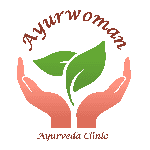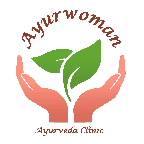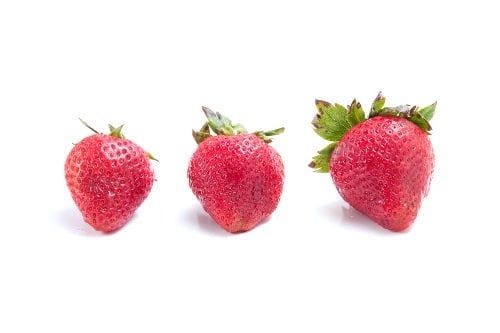Ayurvedic Body Type
The system of Ayurveda has its roots in the Indian subcontinent and is as old as the ancient scriptures of that country. This practice of health science describes all that affects the mind and body to any extent. Ayurveda explains health as a sound balance of the body and mind with the external and internal environment.
According to Ayurveda, the human body constitutes of tri-doshas (three humors), sapthadathus (seven tissues) and trimala (three residual wastes).
The Three doshas
The three doshas namely vata dosha, pitta dosha, and kapha dosha are the forces in the material body responsible for all the physiological functions concerning to the human survival. They exist in a delicate balance with each other, with the internal body environment and the external environment. Any shift in this delicate balance will cause pathological derangements in the body physiology. In other words, this is a cause of disease and infirmity.
The association of the three doshas is not the same in all individuals. They exist in a wide range of permutations and combinations and are specific for an individual. This distinct dosha constitution of an individual is, according to the ayurvedic jargon called, his ‘dosha prakruthi’ or in lay person terms Ayurvedic Body Type.
When do we get our Ayurvedic Body Type
The doshic prakruthi of an individual takes shape with the embryo and in the fetus at the time of conception.
The doshas associated with the paternal (sukra/semen) and maternal (sonitha/ovum) factors responsible for fertilization and pregnancy associated with the embryo (garbha) and gives rise to the doshic prakruthi of the individual.
What factors influence our Dosha Constitution formation ?
It is to be noted that only the un-deranged (avikrutha) doshas in the sukla and arthava take part in the formation of prakruthi of an individual. Any doshic derangement in these dathus (sukla and arthava) will not give rise to garbha (conception) and if at all does, will proceed to miscarriage or abortion and very rarely, will give forth disfigured or deformed garbha (embryo).
A common confusion would be as to how could the imbalanced doshas be responsible for the genesis of conception when they are prone to cause diseases. Well, at the time of gestation the attributes of the three doshas in the sukla and arthava help to engineer the new embryo as they are the essence of the doshas of rasa dathu which ultimately evolves from the food eaten.
The intrauterine environment during gestation, the external environment and mother’s diet also influence the Prakruthi formation. But once established, the person bears this doshic constitution for life unto death.
What are the Prominent Dosha Combinations ?
There are numerous possible variations of these dosha combinations. However, experts have broadly classified them into following seven groups:
The sama dosha Prakrithi
If all three doshas are present in equal proportion, we can call that individual as belonging to the Sama Prakriti. That is a theoretically possible combination but can be a rare occurrence.
This ayurvedic body type is considered the best and contributes the most to good health.
The dwandwa dosha prakruthi
Instead of having all three doshas in equal proportion, there will be situations where two doshas are dominant, and the third dosha is comparatively weaker. Such dual constitution situations are Dwanda Prakriti.
Let us take a case where an individual exhibits some features of Pitha Prakriti and some traits of Kapha Prakriti, that can be an instance of a Pitha-Kapha Prakriti.
There can be three such possible body type combinations such as Vatha-Pitha, Vatha-Kapha, and Pitha-Kapha. This constitution contributes to intermediate health.
The ekadoshaja prakruthi
Individuals with any single dominating doshas are known as belonging to Ekadosha Prakriti. There are three such Prakriti types, which are Vatha dominant, Pitha dominant or Kapha dominant Prakriti respectively. This combination is the most troublesome constitution. An individual constituted this way is sure to fall prey to specific groups of diseases.
Dosha Traits
The Ayurvedic texts have given detail explanations on the dosha attributes or traits of individuals having such dosha combinations. See below for an oversimplified summary of the three ayurvedic body types.
There are numerous quizzes on the internet to self evaluate one’s Prakriti. Please use them with caution as those should only be treated with caution and from an education point of view. Kindly don’t use them for self diagnosis and ayurvedic treatment. It is best to do your Prakriti analysis by an Ayurvedic practitioner.
Vatha prakruthi constitution
- Persons with vatha dominating in their prakruthi will be lean and tall with a tanned complexion
- Their veins will be prominent and will be visible externally
- They will not be firm in structure or demeanour and will be the fluctuating lot
- They will be very talkative
- They could be greedy, mean, and always falling prey to sensual pleasures
- They prefer heat to cold and like sweet, sour and salty tastes
Pitta prakruthi constitution
- They will have a soft and beautiful body with a wheatish complexion
- These prakruthi people will have lots of moles and skin tags
- They will have a voracious appetite and thirst
- They are the intelligent and enthusiastic group
- They will be orators with great rhetoric skills
- They are well behaved and clean
- They are least interested in sex
- They have premature greying, sweat regularly and may have a foul odour
Kapha prakruthi person
- They belong to the plump category and are easily prone to obesity
- They are very sluggish and slow in their speech and activities
- They have a very firm character and are capable of being vindictive and unforgiving to the end of their life.
- They have thick and bass voices.
- They are not very affected by hunger, thirst, grief or hurdles
- They are honest and intelligent
- They are sexually very active
- They are incapable of harsh words and have long-lasting friendships
Ayurvedic Body type Analysis
The assessment of Prakruthi can be crucial in many instances. Dosha Assessment is critical to Ayurvedic diagnosis. In case of a healthy person, a thorough Dosha assessment can identify an individual’s proneness to a single the diseases or a disease family. And can be very useful in coaching a person on specific and holistic preventive techniques to healthy living such as prescribing an ayurvedic diet. In other words, use Prakruthi or dosha assessment to live an Ayurveda way of life.
The innate prakruthi of a person also determines the prognosis of a disease. For example, arthritis in a vatha prakruthi person would be much harder to treat than in a kapha-pitta prakruthi or a sama dosha prakruthi.
The prakruthi factor along with many other factors must be kept in mind by the physician while assessing the pathology, diagnosis, and prognosis of a disease to be able to deal with the patient and suggest the right therapy.
To know more about your Ayurvedic body type and to start living an Ayurvedic way of life, contact your Ayurveda health coach by filling up the contact form or emailing us at Ayurwoman Ayurveda Clinic, Melbourne, Australia.


